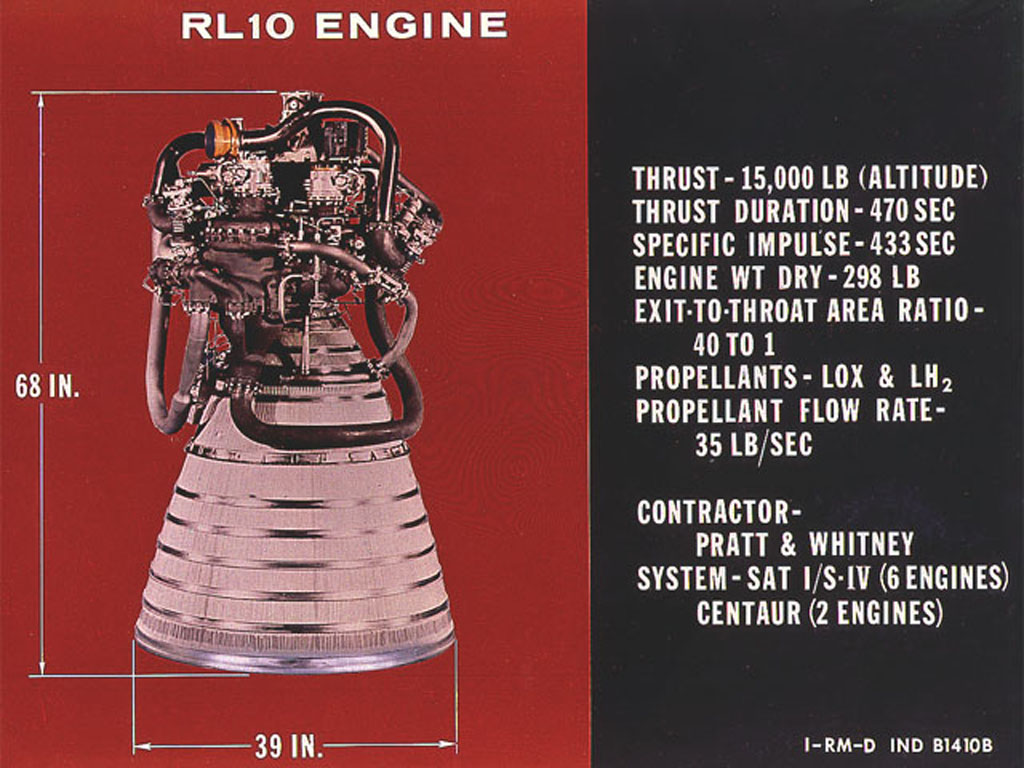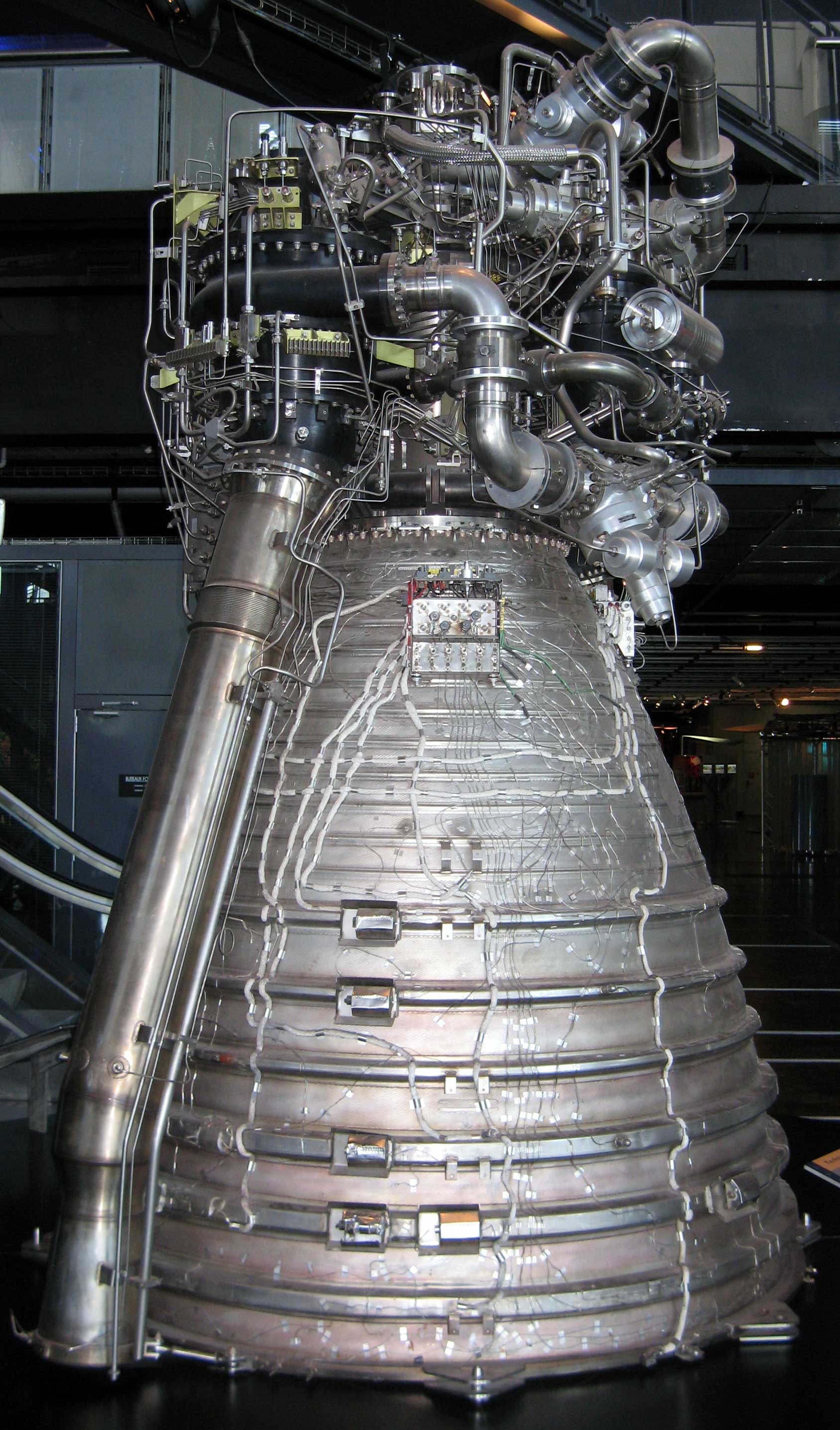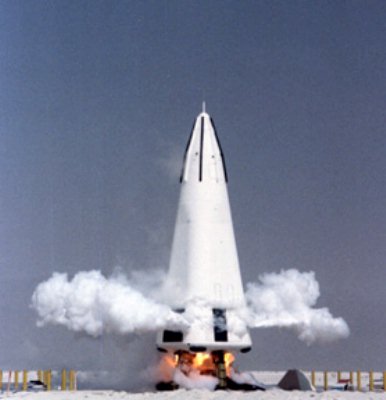|
RL-10
The RL10 is a liquid-fuel cryogenic rocket engine built in the United States by Aerojet Rocketdyne that burns cryogenic liquid hydrogen and liquid oxygen propellants. Modern versions produce up to of thrust per engine in vacuum. Three RL10 versions are in production for the Centaur upper stage of the Atlas V and the DCSS of the Delta IV. Three more versions are in development for the Exploration Upper Stage of the Space Launch System and the Centaur V of the Vulcan rocket. The expander cycle that the engine uses drives the turbopump with waste heat absorbed by the engine combustion chamber, throat, and nozzle. This, combined with the hydrogen fuel, leads to very high specific impulses (''I''sp) in the range of in a vacuum. Mass ranges from depending on the version of the engine. History The RL10 was the first liquid hydrogen rocket engine to be built in the United States, with development of the engine by Marshall Space Flight Center and Pratt & Whitney beginning in the 1 ... [...More Info...] [...Related Items...] OR: [Wikipedia] [Google] [Baidu] |
Centaur (rocket Stage)
The Centaur is a family of rocket propelled upper stages produced by U.S. launch service provider United Launch Alliance, with one main active version and one version under development. The diameter Common Centaur/Centaur III flies as the upper stage of the Atlas V launch vehicle, and the diameter Centaur V is being developed as the upper stage of ULA's new Vulcan rocket. Centaur was the first rocket stage to use liquid hydrogen (LH2) and liquid oxygen (LOX) propellants, a high-energy combination that is ideal for upper stages but has significant handling difficulties. Characteristics Common Centaur is built around stainless steel pressure stabilized balloon propellant tanks with thick walls. It can lift payloads of up to . The thin walls minimize the mass of the tanks, maximizing the stage's overall performance. A common bulkhead separates the LOX and LH2 tanks, further reducing the tank mass. It is made of two stainless steel skins separated by a fiberglass honeyco ... [...More Info...] [...Related Items...] OR: [Wikipedia] [Google] [Baidu] |
Cryogenic Rocket Engine
A cryogenic rocket engine is a rocket engine that uses a cryogenic fuel and oxidizer; that is, both its fuel and oxidizer are gases which have been liquefied and are stored at very low temperatures. These highly efficient engines were first flown on the US Atlas-Centaur and were one of the main factors of NASA's success in reaching the Moon by the Saturn V rocket. Rocket engines burning cryogenic propellants remain in use today on high performance upper stages and boosters. Upper stages are numerous. Boosters include ESA's Ariane 5, JAXA's H-II, and the United States Delta IV and Space Launch System. The United States, Russia, Japan, India, France and China are the only countries that have operational cryogenic rocket engines. History Cryogenic propellants Rocket engines need high mass flow rates of both oxidizer and fuel to generate useful thrust. Oxygen, the simplest and most common oxidizer, is in the gas phase at standard temperature and pressure, as is hydroge ... [...More Info...] [...Related Items...] OR: [Wikipedia] [Google] [Baidu] |
S-IV
The S-IV was the second stage of the Saturn I rocket used by NASA for early flights in the Apollo program. The S-IV was manufactured by the Douglas Aircraft Company and later modified by them to the S-IVB, a similar but distinct stage used on the Saturn IB and Saturn V rockets. The S-IV stage was a large LOX/LH2-fueled rocket stage used for the early test flights of the Saturn I rocket. It formed the second stage of the Saturn I and was powered by a cluster of six RL-10A-3 engines. Each one of the engines supplied of thrust for a total of about . The cryogenic LH2 (liquid hydrogen) and LOX (liquid oxygen Liquid oxygen—abbreviated LOx, LOX or Lox in the aerospace, submarine and gas industries—is the liquid form of molecular oxygen. It was used as the oxidizer in the first liquid-fueled rocket invented in 1926 by Robert H. Goddard, an app ...) tanks were separated by a common bulkhead. The forward bulkhead of the LOX tank formed the aft bulkhead of the LH2 tank. ... [...More Info...] [...Related Items...] OR: [Wikipedia] [Google] [Baidu] |
Vulcan (rocket)
Vulcan Centaur is a two-stage-to-orbit, heavy-lift launch vehicle that is under development by the United Launch Alliance (ULA) since 2014 with an initial flight expected in early 2023. It is principally designed to meet launch demands for the U.S. government's National Security Space Launch (NSSL) program for use by the United States Space Force and U.S. intelligence agencies for national security satellite launches. The maiden flight is slated to launch Astrobotic Technology's ''Peregrine'' lunar lander for NASA's Commercial Lunar Payload Services (CLPS) program and Kuiper Systems' Kuipersat-1 and Kuipersat-2, no earlier than 2023, after multiple delays from the initially planned first flight in 2019. Description Vulcan is ULA's first new launch vehicle design; it adapts and evolves technologies that were developed for the Atlas V and Delta IV rockets of the USAF's EELV program. The first-stage propellant tanks have the same diameter as the Delta IV Common Booster Core ... [...More Info...] [...Related Items...] OR: [Wikipedia] [Google] [Baidu] |
Space Launch System
The Space Launch System (SLS) is an American super heavy-lift expendable launch vehicle developed by NASA. As of 2022, SLS has the highest payload capacity of any rocket in operational service, as well as the greatest liftoff thrust of any rocket in operation. As the primary launch vehicle of the Artemis moon landing program, SLS is designed to launch the crewed Orion spacecraft on a trans-lunar trajectory. The first uncrewed launch, Artemis 1, took place on 16 November 2022. Development of SLS began in 2011, as a replacement for the retired Space Shuttle as well as the cancelled Ares I and Ares V launch vehicles. As a Shuttle-derived vehicle, the Space Launch System reuses hardware from the Space Shuttle program, including the solid rocket boosters and RS-25 first stage engines. An original flight date of late 2016 was delayed by nearly 6 years. The SLS program has attracted criticism for such delays, high cost, and non-competitive use of Space Shuttle component ... [...More Info...] [...Related Items...] OR: [Wikipedia] [Google] [Baidu] |
McDonnell Douglas DC-X
The DC-X, short for Delta Clipper or Delta Clipper Experimental, was an uncrewed prototype of a reusable single-stage-to-orbit launch vehicle built by McDonnell Douglas in conjunction with the United States Department of Defense's Strategic Defense Initiative Organization (SDIO) from 1991 to 1993. Starting 1994 until 1995, testing continued through funding of the US civil space agency NASA. In 1996, the DC-X technology was completely transferred to NASA, which upgraded the design for improved performance to create the DC-XA. Background According to writer Jerry Pournelle: "DC-X was conceived in my living room and sold to National Space Council Chairman Dan Quayle by General Graham, Max Hunter and me." According to Max Hunter, however, he had tried hard to convince Lockheed Martin of the concept's value for several years before he retired. Hunter had written a paper in 1985 entitled "The Opportunity", detailing the concept of a Single-Stage-To-Orbit spacecraft built with lo ... [...More Info...] [...Related Items...] OR: [Wikipedia] [Google] [Baidu] |
Atlas V
Atlas V is an expendable launch system and the fifth major version in the Atlas launch vehicle family. It was originally designed by Lockheed Martin, now being operated by United Launch Alliance (ULA), a joint venture between Lockheed Martin and Boeing. Atlas V is also a major NASA launch vehicle. It is America's longest-serving active rocket. In August 2021, ULA announced that Atlas V would be retired, and all 29 remaining launches had been sold. , 19 launches remain. Each Atlas V launch vehicle consists of two main stages. The first stage is powered by a Russian RD-180 engine manufactured by Energomash and burning kerosene and liquid oxygen. The Centaur upper stage is powered by one or two American RL10 engine(s) manufactured by Aerojet Rocketdyne and burns liquid hydrogen and liquid oxygen. The Star 48 upper stage was used on the '' New Horizons'' mission as a third stage. Strap-on solid rocket boosters (SRBs) are used in most configurations. AJ-60A SRBs were u ... [...More Info...] [...Related Items...] OR: [Wikipedia] [Google] [Baidu] |
Delta Cryogenic Second Stage
The Delta Cryogenic Second Stage (DCSS) is a family of cryogenic rocket stages used on the Delta III and Delta IV rockets, and on the Space Launch System Block 1. The stage consists of a cylindrical liquid hydrogen (LH2) tank structurally separated from an oblate spheroid liquid oxygen (LOX) tank. The LH2 tank cylinder carries payload launch loads, while the LOX tank and engine are suspended below within the rocket's inter-stage. The stage is powered by a single Aerojet Rocketdyne- Pratt & Whitney RL10B-2 engine, which features an extendable carbon-carbon nozzle to improve specific impulse. Delta III The DCSS first flew on 3 Delta IIIs, failing two out of two times. A booster failed on the maiden flight and the rocket was destroyed by range safety, causing the loss of the DCSS before ignition. On its second flight, the stage tumbled uncontrollably, inserting the payload into a useless orbit. On the third flight, the stage performed the planned burn but fell short of the ta ... [...More Info...] [...Related Items...] OR: [Wikipedia] [Google] [Baidu] |
Delta IV
Delta IV is a group of five expendable launch systems in the Delta rocket family introduced in the early 2000s. Originally designed by Boeing's Defense, Space and Security division for the Evolved Expendable Launch Vehicle (EELV) program, the Delta IV became a United Launch Alliance (ULA) product in 2006. The Delta IV is primarily a launch vehicle for United States Air Force (USAF) military payloads, but has also been used to launch a number of United States government non-military payloads and a single commercial satellite. The Delta IV originally had two main versions which allowed the family to cover a range of payload sizes and masses: the retired Medium (which had four configurations) and Heavy. As of 2019, only the Heavy remains active, with payloads that would previously fly on Medium moving to either the existing Atlas V or the forthcoming Vulcan. Retirement of the Delta IV is anticipated in 2024. , two flights remain. Delta IV vehicles are built in the ULA facilit ... [...More Info...] [...Related Items...] OR: [Wikipedia] [Google] [Baidu] |
Exploration Upper Stage
The Exploration Upper Stage (EUS) is being developed as a large second stage for Block 1B and Block 2 of the Space Launch System (SLS), succeeding Block 1's Interim Cryogenic Propulsion Stage. It will be powered by four RL10C-3 engines burning liquid oxygen and liquid hydrogen to produce a total thrust of . , the SLS Block 1B will have a payload capacity to low Earth orbit of and Block 2 will have a payload capacity of . The EUS is expected to first fly on Artemis IV in March 2026. Development The Block 1 configuration of SLS has a core stage powered by four RS-25 engines, two Space Shuttle-derived five-segment solid rocket boosters, and an Interim Cryogenic Propulsion Stage (ICPS) upper stage. NASA will develop the EUS to increase SLS performance beyond Block 1 specifications. The improved upper stage was originally named the Dual Use Upper Stage (DUUS, pronounced "duce") but was later renamed the Exploration Upper Stage (EUS) due to DUUS sounding lik ... [...More Info...] [...Related Items...] OR: [Wikipedia] [Google] [Baidu] |
Saturn I
The Saturn I was a rocket designed as the United States' first medium lift launch vehicle for up to low Earth orbit payloads.Terminology has changed since the 1960s; back then, 20,000 pounds was considered "heavy lift". The rocket's first stage was built as a cluster of propellant tanks engineered from older rocket tank designs, leading critics to jokingly refer to it as "Cluster's Last Stand". Its development was taken over from the Advanced Research Projects Agency in 1958 by the newly formed civilian NASA. Its design proved sound and flexible. It was successful in initiating the development of liquid hydrogen-fueled rocket propulsion, launching the Pegasus satellites, and flight verification of the Apollo command and service module launch phase aerodynamics. Ten Saturn I rockets were flown before it was replaced by the heavy lift derivative Saturn IB, which used a larger, higher total impulse second stage and an improved guidance and control system. It also led the way ... [...More Info...] [...Related Items...] OR: [Wikipedia] [Google] [Baidu] |
Upper Stage
A multistage rocket or step rocket is a launch vehicle that uses two or more rocket ''stages'', each of which contains its own engines and propellant. A ''tandem'' or ''serial'' stage is mounted on top of another stage; a ''parallel'' stage is attached alongside another stage. The result is effectively two or more rockets stacked on top of or attached next to each other. Two-stage rockets are quite common, but rockets with as many as five separate stages have been successfully launched. By jettisoning stages when they run out of propellant, the mass of the remaining rocket is decreased. Each successive stage can also be optimized for its specific operating conditions, such as decreased atmospheric pressure at higher altitudes. This ''staging'' allows the thrust of the remaining stages to more easily accelerate the rocket to its final speed and height. In serial or tandem staging schemes, the first stage is at the bottom and is usually the largest, the second stage and subsequ ... [...More Info...] [...Related Items...] OR: [Wikipedia] [Google] [Baidu] |










